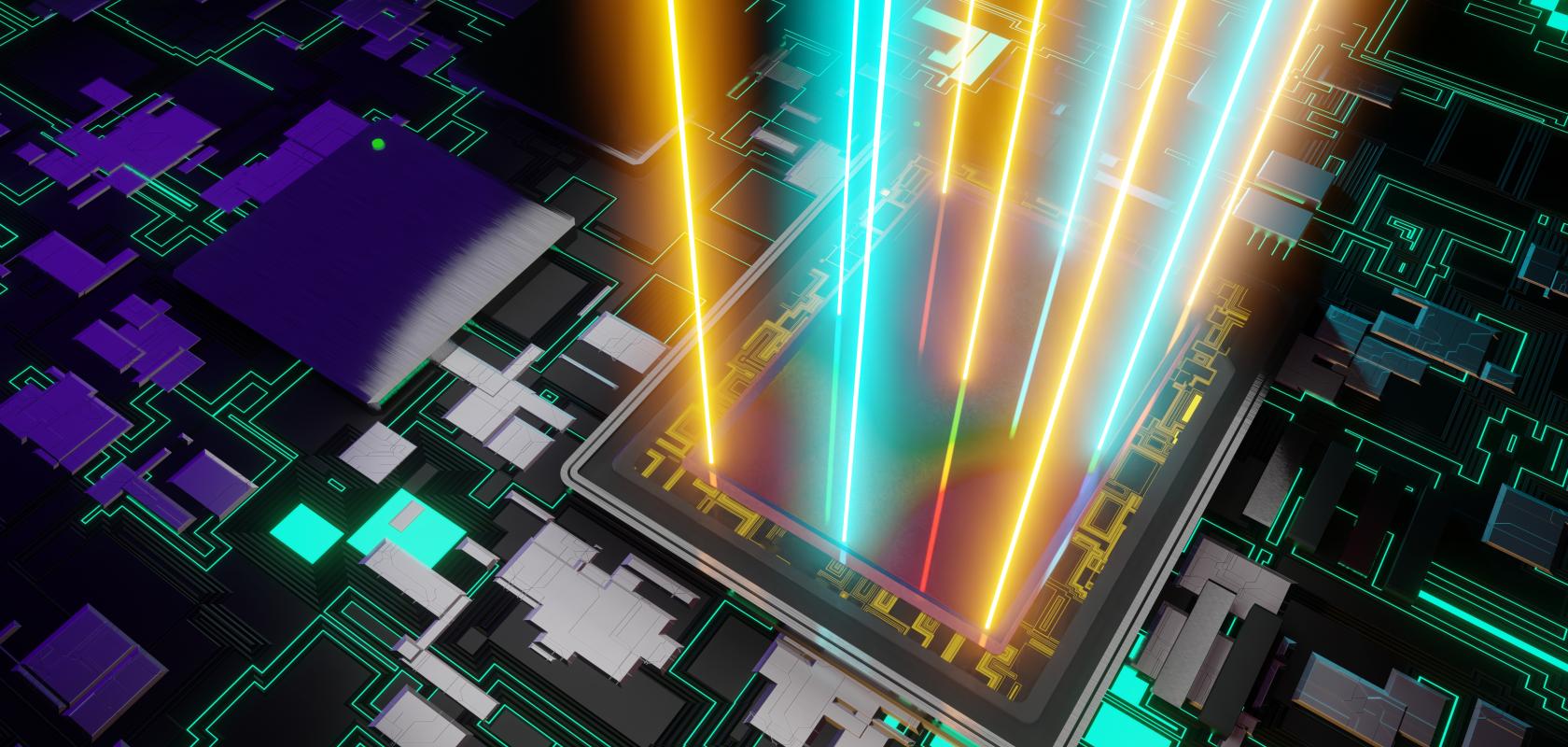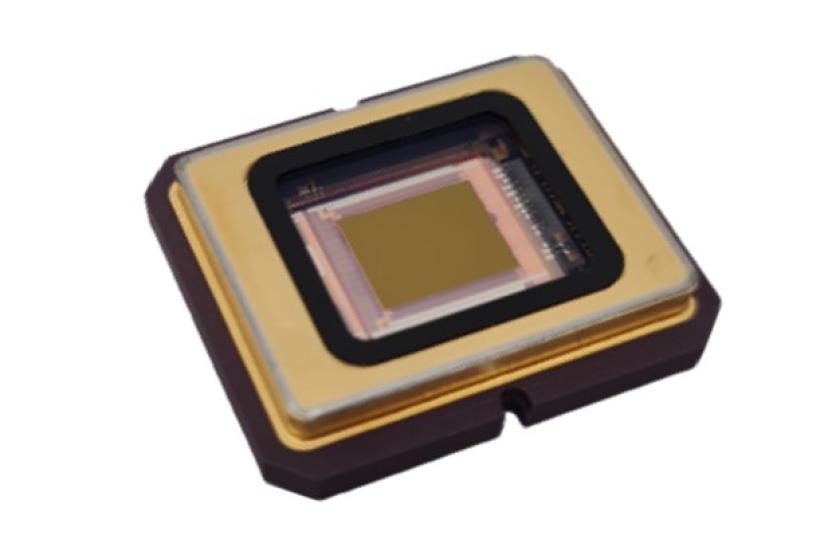The latest image sensors for 2025

Image sensors are devices that convert light into electrical signals, which are then processed to form a digital image (Credit: atdigit/Shutterstock.com)
Image sensors are used in imaging and machine vision to enable a wide range of applications. In imaging, they enable high-quality images to be captured in devices such as cameras, medical imaging systems, and scientific instruments. In machine vision they are used for automation, object recognition, and inspection processes.
What is an image sensor?
An image sensor is a device that converts light into electrical signals, which are then processed to form a digital image. It is a key component in digital cameras, smartphones, and other imaging devices. The sensor captures light reflected off objects in a scene and translates that information into digital data, enabling the creation of still images or video.
There are two main types of image sensors. Complementary metal-oxide-semiconductor (CMOS) sensors are predominantly used in digital cameras and smartphones because they are efficient, fast, and consume less power. Charge-coupled device (CCD) sensors, on the other hand, are often used in professional cameras and scientific instruments, though they are gradually being replaced by CMOS sensors.

SCD SWIFT-EI SWIR detector
SCD is introducing the revolutionary SWIFT-EI SWIR detector with Event-based imaging (known as neuromorphic vision) in a VGA format. An important advantage of the SWIFT EI that differentiates it from other neuromorphic sensors is that it provides simultaneous standard high frame-rate imaging synchronized to the event-based output, meaning that both the image and the event are streamed, and can be displayed, in parallel.
The SWIFT EI 640 EI sensor supports an extremely high imaging frame rate: For the image channel up to 1500 Hz for a full VGA array, and the event channel is as fast as 25 KHz
The SWIFT EI product is available in two configurations: a stand-alone ceramic package and MIRA - a full camera solution provided by SCD's subsidiary Quantum Imaging. In parallel, SCD is developing low SWaP proximity electronic that will support both Camera Link and MIPI video interface that will be launched in Q4/2024.
Find out more information about the new SWIFT-EI SWIR detector by visiting the SCD website.
SPONSORED BY

Sensors for industrial imaging are global shutter to freeze motion, and usually have larger pixels than sensors found in mobile phones. Smaller pixels mean more can be squeezed onto a sensor, leading to higher resolution, but this is at the expense of other performance characteristics – the noise increases with smaller pixels and the full well capacity is lower.
What is driving the market for image sensors?
The trends, however, follow the investment being made in consumer device imaging, which tends to be for smaller pixels. It’s not just about pixel size though, and the machine vision sector will benefit from other advances being made in sensor technology for mobile phones, and now to a certain extent imaging for the automotive sector, for driver assistance. Technology for 3D ranging through advances in lidar, for imaging in the shortwave infrared, and for event-based or neuromorphic sensing, are all progressing and all have application in machine vision.
Image sensors on the market today
When it comes to commercial offerings, Sony’s Pregius sensors are used widely in the machine vision industry, and are available from a number of distributors. Recently, Framos announced the availability of the IMX548 and IMX568 5.1-megapixel Pregius S sensors. These 1/1.8-type, global shutter sensors are available in monochrome or colour.
The IMX548 with SLVS interface has a frame rate of up to 114 fps with 8 bits in all-pixel scan mode. The IMX568 supports the Mipi CSI-2 interface and achieves 96 fps at 8 bits. Both sensors support multiple readout modes: all-pixel scan mode, vertical or horizontal 1/2 subsampling mode, 2x2 FD binning mode, and various ROI settings.
Framos offers Sony IMX536, IMX546, and IMX566 sensors for factory automation, ITS and embedded vision. The IMX536 is a high-speed variant with SLVS/SLVS-EC interface; it reaches a frame rate of up to 194 fps with 8 bits in all-pixel scan mode. The IMX546 also has an SLVS/SLVS-EC interface and achieves 91 fps at 8 bits. Its resolution makes it suitable for scenarios requiring full HD displays – for example, in factory automation and ITS.
When it comes to event-based sensors, Macnica ATD Europe offers the IMX636 and IMX637 sensors from Sony, developed with event-based imaging firm Prophesee. Event-based sensors can achieve high-speed data output with low latency by limiting the output data to luminance changes from each pixel, combined with information on pixel position coordinates and time. Only the pixels that have detected a change in luminance for the object can output data, allowing the sensor to immediately detect the luminance changes at high speed, with low latency, and at high temporal resolution while operating with low power consumption.
Prophesee has an evaluation kit for the IMX636 and IMX637 sensors. The kit gives developers access to the sensors, which feature a 4.86μm pixel pitch and 1,280 x 720 pixel resolution for the IMX636. This kit is ideal for full performance evaluation, supporting full sensor bandwidth of up to 3Gb/s via a USB 3 interface.
Another development from Sony is a large-format 56.73mm diagonal CMOS image sensor, IMX661, for industrial equipment with a global shutter function and an effective pixel count of 127.68 megapixels. It has an optical size nearly 10 times larger than the common 1.1-type image sensor.
Also recently announced is the IMX487, a 2/3-type CMOS image sensor for industrial equipment, which is sensitive to UV light. It delivers a high level of UV sensitivity and high-quality image with minimal noise, thanks to components specialised for the UV wavelength and a unique light-receiving unit structure.
Sony’s IMX990 and IMX991 devices are its latest shortwave infrared sensors. These detectors have a small pixel for an InGaAs sensor at 5µm, which results in a very compact package design. The IMX990 is the higher resolution version at SXGA, 1,296 x 1,032 pixels. It transmits data at 130 fps at 8 bits, 120 fps at 10 bits and 70 fps at 12 bits.
The latest shortwave infrared detector from Andanta is an uncooled InGaAs detector with a spatial resolution of 64 x 64 pixels, a pixel size of 40µm, and an active sensor area of 2.56 x 2.56mm. A 32-pin ceramic LCC design was chosen to package the sensor.
Sticking with imaging in the infrared region, Lynred recently enhanced the capabilities across its range of 12µm thermal infrared detectors. These 12µm pixel pitch sensors, based on microbolometer technology, have a noise equivalent temperature difference (NETD) performance of 40 or 50mK.
Other sensor technologies include Gpixel’s time-of-flight sensor for 3D imaging. The GTOF0503 sensor features a 5µm three-tap iToF pixel, incorporating an array with a resolution of 640 x 480 pixels. The sensor was fabricated using Tower Semiconductor’s 65nm pixel-level stacked backside illuminated CMOS sensor technology, made in Tower’s Uozo, Japan, facility.
Hamamatsu Photonics offers a range of 3D time-of-flight back-thinned image sensors. Through back-thinning, the sensors deliver high sensitivity in the near infrared region. Active circuitry improves the tolerance to background light and makes this new range of distance sensors ideal for measurement applications, including hygiene management, measurement for social distancing and remote operations.
OmniVision Technologies’ OH0TA OVMed medical image sensor has a package size of just 0.55 x 0.55mm, featuring a 1.0µm pixel and a 1/31-inch optical format. It reaches an RGB resolution of 400 x 400 pixels at 30 fps, with power consumption of 20mW. This allows designers to add ultra-compact visualisation to single-use and reusable endoscopes, as well as catheters and guidewires, with an outer diameter of 1 to 2mm.
One of the latest global shutter sensors from On Semiconductor is the AR0234CS 2.3-megapixel CMOS device. It can capture 1,080p video and single frames operating up to 120 fps. The low noise and low-light response make it suitable for applications across consumer, commercial and industrial IoT, and the extended operating temperature range means it can be deployed outdoors.
Semi Conductor Devices (SCD) recently announced a new SWIR detector, the SWIFT-EI SWIR. It is designed to support an extremely high imaging frame rate: for the image channel up to 1500 Hz for a full VGA array, and the event channel is as fast as 25 KHz. It could potentially open up new capacities for machine vision applications in a multitude of fields.
Available from Teledyne e2v is the Topaz series of industrial CMOS sensors with 2 megapixel and 1.5 megapixel resolution devices. These 1,920 x 1,080-pixel and 1,920 x 8,00-pixel sensors are housed in a 4.45mm-wide, chip-scale package. The sensors have an optical array centre that matches the mechanical centre of the package, allowing for a slim camera design. This makes them particularly suitable for miniature OEM barcode engine designs, mobile terminals and sleds, IoT, contactless authentication systems, wearable devices, drones and robotics.
This is not an exhaustive list. If you provide image sensors and would like your company to be included, please let us know at: editor.imaging@europascience.com.

